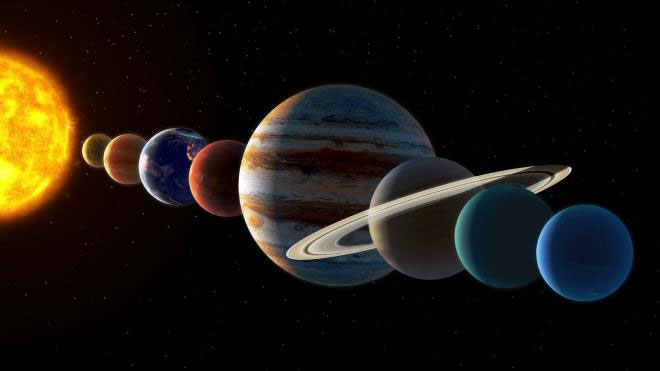The interesting 'planetary parade' takes place in July
The parade of the planets will take place around 2 weeks of July but cannot be completely observed.
Although there is no term "planetary parade" in science, astronomy lovers often use this phrase when referring to the phenomenon of planets in a row in the same area of the sky.
Such a parade occurred on April 18, 2002. As expected, the same event will take place in July 2020. Next is March, June 2022 and the years 2040 and 2854.

Simulation image of "parade of planets". (Image: Starwalk)
In this July parade, all the planets of the solar system - Mercury, Venus, Earth, Mars, Jupiter, Saturn, Uranus, Neptune and Dwarf Pluto - will line up (slightly bent) on one side of the Sun at the same time.
According to Faina Rubleva - Scientific Director of the Moscow Observatory, at this year's event, the Sun will be obscured by Mercury, Uranus and Neptune cannot be seen with the naked eye.
"Saturn, Jupiter, and Mars are visible at night. We don't see the Earth because we're up there. You can see Venus, but only in the morning. And Mercury lies in underneath, the Sun and the Sun overshadow it, "she said.
Rubleva also noted that the planets in the sky would move slowly and slowly form a gradual parade. Therefore, this phenomenon can be observed for about two weeks , in contrast to eclipses and lunar eclipses that occur in a relatively short period of time.
"From July 4, we can observe Mars, Jupiter and Saturn at night and Venus in the morning. By the 14th, the visibility of Saturn and Jupiter will improve because this is the time. the point they reflect the sunlight well and will be most convenient to observe, " she adds.
- Video: Beating eggs under the sea
- Billions of viruses are falling on our heads every day without anyone knowing
- NASA discovered the smallest planet in the universe
- Planetary nebula
- 10 interesting things about nature you may not know
- The most beautiful Perseid meteor shower in 113 years
- Discover new planetary system formed in the universe
- Find a new planetary system containing 3
- Strange planetary system has 3 'Venus'
- Detecting inclined planetary system
- Revealing the mysteries of the Earth makes everyone 'startled'
- The whisper of nature
 Van Allen's belt and evidence that the Apollo 11 mission to the Moon was myth
Van Allen's belt and evidence that the Apollo 11 mission to the Moon was myth The levels of civilization in the universe (Kardashev scale)
The levels of civilization in the universe (Kardashev scale) Today Mars, the sun and the Earth are aligned
Today Mars, the sun and the Earth are aligned The Amazon owner announced a secret plan to build a space base for thousands of people
The Amazon owner announced a secret plan to build a space base for thousands of people